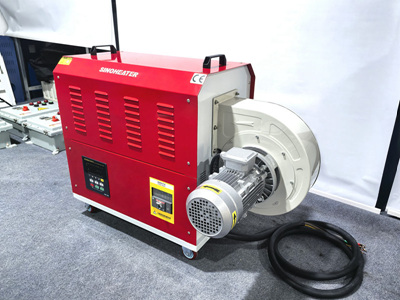Key Operational Points for Softening Plastics with Hot Air Blowers in Model Making
Plastic softening using hot air blowers is a critical technique in model making, enabling precise shaping and assembly of components. This process demands careful control of temperature, airflow, and material properties to avoid deformation or damage. Below are essential operational points for achieving optimal results.
Temperature Control for Different Plastic Types
The melting point of plastics varies significantly based on their chemical composition. For instance, polyethylene (PE) softens at approximately 120–130°C, while polyvinyl chloride (PVC) requires temperatures around 160–180°C. Using a hot air blower, start with a low temperature setting and gradually increase it while observing the plastic’s response.
For thin plastic sheets, such as those used in model aircraft canopies, a temperature of 100–120°C is often sufficient to induce softening without warping. Thicker components, like model car body panels, may need temperatures up to 150°C. Always conduct a preliminary test on scrap material to determine the ideal temperature range for the specific plastic type.
Airflow Management for Uniform Heating
The distance between the hot air blower nozzle and the plastic surface directly impacts heating efficiency. A nozzle positioned too close can create localized overheating, leading to bubbles or burns. Conversely, excessive distance results in uneven softening. Maintain a gap of 5–10 cm for thin plastics and 10–15 cm for thicker materials.
Adjust the airflow speed based on the plastic’s thickness and the desired shaping speed. For fine details, such as bending model ship masts, use a low airflow setting to prevent sudden melting. When softening large areas, like the wings of a model airplane, a moderate airflow ensures consistent heating across the surface.
Techniques for Shaping Softened Plastics
Once the plastic reaches its softening point, immediate shaping is crucial. For curved components, such as model car fenders, use a wooden or metal form to guide the plastic into the desired shape. Apply gentle pressure to avoid cracking, especially with brittle plastics like acrylonitrile butadiene styrene (ABS).
When working with multi-layer plastics, such as laminated sheets for model boat hulls, heat each layer sequentially. Start with the outer layer and progress inward to prevent delamination. For intricate designs, like the lattice structures in model architectural kits, use a fine-tipped nozzle to direct heat precisely.
Safety and Environmental Considerations
Operating a hot air blower generates fumes, particularly when melting plastics containing additives or colorants. Work in a well-ventilated area or use a fume extraction system to minimize inhalation risks. Wear heat-resistant gloves and safety goggles to protect against burns and flying debris.
Avoid overheating plastics, as this can release toxic gases like hydrogen chloride from PVC or styrene from polystyrene. If the plastic begins to discolor or emit a strong odor, reduce the temperature immediately. Dispose of scrap material responsibly to prevent environmental contamination.
Advanced Techniques for Complex Models
For models requiring precise joints, such as interlocking parts in robotic kits, use a combination of hot air and mechanical pressure. Heat the joint area until the plastic becomes pliable, then press the components together firmly. Allow the assembly to cool naturally to ensure a strong bond.
When creating textured surfaces, like the scales on a model dragon, heat the plastic lightly and press it against a textured mold. This technique, known as “hot stamping,” transfers the mold’s pattern onto the plastic. For three-dimensional textures, use a heated embossing tool to carve details into the softened material.
By mastering these operational points, model makers can achieve professional-grade results with hot air blowers. Understanding the interplay between temperature, airflow, and material properties is key to successful plastic softening and shaping.




